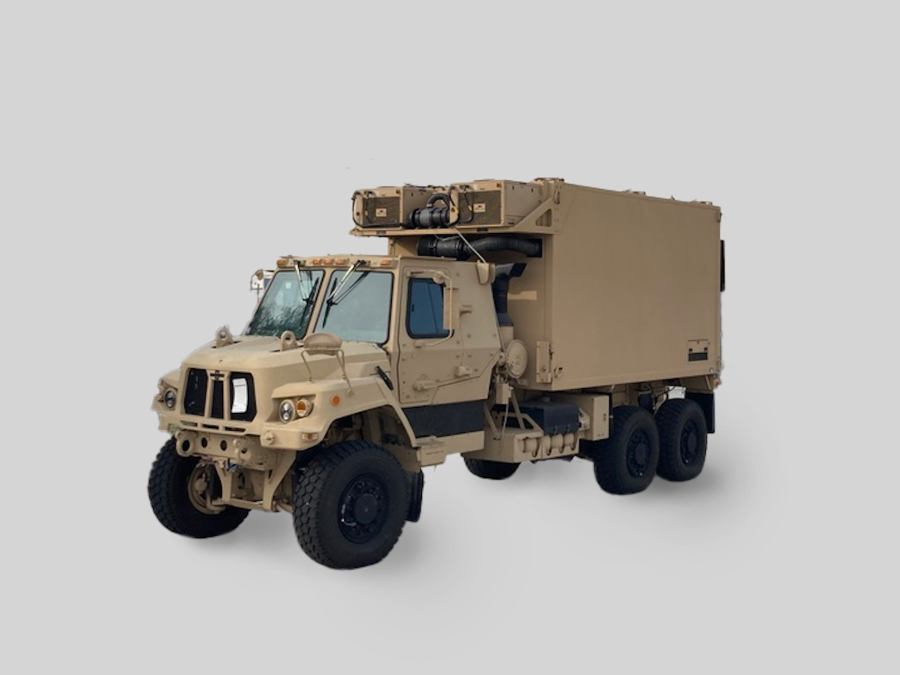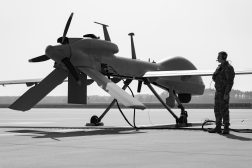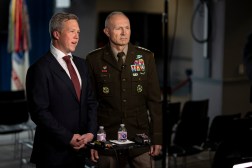Army wants to tailor TITAN system to certain units, theaters

The Army is planning to tailor its next-generation ground system to collect and disseminate sensor data to theaters and units.
Much is still to be determined regarding the final Tactical Intelligence Targeting Access Node (TITAN) — to include how it will be employed and by whom — which will be shaped by upcoming experimentation. But officials know for certain that it won’t be pure fleeting, or giving the same system to all types of units across all theaters, a trend seen across many different capability portfolios for the Army.
“The one-size-fits-all approach, which we’ve done for years, does not work. We are going to provide the Army with modular open systems that are tailorable depending on what a commander needs,” Col. Chris Anderson, project manager for intelligence systems and analytics at program executive office for intelligence, electronic warfare and sensors, said in an interview at the annual AUSA conference. “I know going in that not every commander wants a 5-ton truck with a giant antenna farm towed along with it. They want something lighter or they want something that’s not truck based at all. Light units want smaller than a JLTV [Joint Light Tactical Vehicle]. We’re really going to leverage this prototyping period and the authorities that we have to do prototyping to give the Army options and really inform requirements. I think that’s one of the big benefits of doing prototyping.”
The TITAN program began with pre-protypes delivered to the Pacific and Europe around 2022 to help inform the final effort. The platform is essentially a truck aimed at collecting and disseminating intelligence to the battlefield from national and joint assets in once place. It will be manned by intelligence analysts from various disciplines, with data collected and processed by the system provided to other command-and-control systems for targeting and situational awareness.
The system comes in an advanced variant designed for division and above, providing direct access to more sensor data at higher classification levels, and a basic variant designed for division and below, prioritizing survivability, mobility and enabling secure but unclassified-encrypted communications.
In March, Palantir — primarily a software company — won the prime contract for the program with a team of Anduril, Northrop Grumman — which provided the pre-prototypes and is helping with platform integration — and Pacific Defense. The first Palantir prototype was delivered to Joint Base Lewis-McChord, Washington, in July for the Multi-Domain Task Force, where troops will begin training with it.
One of the recent examples for why a single system shouldn’t be fielded across all units and theaters, comes from when the system was deployed in the Middle East, then sent to the Philippines and the humidity of the Pacific created problems that the Army hadn’t necessarily foreseen or experienced in the desert.
The service plans to use various experimentation efforts to help inform the future of the program — such as production — and concepts to include where it will reside on the battlefield.
“From a PM perspective, we’re learning about the capabilities and what it can and can’t do. If we shrink an antenna, how does that affect performance? Then we’re informing commanders and decision makers,” Anderson said. “The value of prototyping [is] we’re really zeroing in on how many of these the Army needs and what do they need to look like, who’s going to use them where? That’s — it’s really beyond materiel developer, it’s really up to the Army to figure out.”
The service released a request for information in August to ask for industry input regarding future production. The notice asked for advice on recommended hardware configurations for both variants, software development approaches, Modular Open Systems Approach compliance, how companies would approach systems integration and software intellectual property strategies, among others.
Anderson said it will be a mix of industry input and experimentation that will inform the way ahead.
“We were trying to keep a very modular approach to this. Antenna technology … advances every day. We just want to make sure we’re not locking ourselves into a design too prematurely. We want to get the best available compute and antenna technology and radios, whatever the latest and greatest is,” he said. “Again, it goes to, I don’t think we’re going to have a pure fleet of TITANs. They’re all going to look a little bit different, just because they’re going to get tailored to whatever that unit is doing. That’s okay and it’s uncomfortable for the Army because that’s not how we’ve done things.”
While Anderson said it’s probably pretty settled that the advanced variant will be mounted to the Family of Medium Tactical Vehicles with a tow array of antennas for the theater and maybe corps, what’s less clear is what below corps and divisions need. Maybe a capability at the brigade level will be necessary.
For example, U.S. Army Special Operations Command is interested in what Anderson called a “lunchbox TITAN,” where troops could have a laptop-based capability with a satellite uplink. That isn’t necessarily in the offing just yet, Anderson said, but he predicts there will be Humvee or infantry fighting vehicle variants that are smaller than the current JLTV basic design.
While the first prototype at Lewis-McChord will be employed by the Multi-Domain Task Force, Anderson said it’s important to get the system to other units to test out and provide more data for how it’ll be used.
The Army has quarterly decision cycles for what the TITAN prototype priorities are.
“We need a really broad mix of units. We need light units, heavy units, focused on different regions. We’re being very deliberate, the Army is being very deliberate about … where we place each prototype, just based on what we need to learn out of that,” he said. “It’s a deliberate three-star-level decision on, okay, where is the next one going and why, and what are our learning demand?”
He noted there should be a decision next month on where the second prototype will go, but the Army isn’t trying to plan too far in advance given how quickly things change.
The program office is gearing up for an operational test toward the end of fiscal 2026 that will support a production decision. Leading up to that test, the Army’s Requirements Oversight Council will approve the final requirements for the system.






